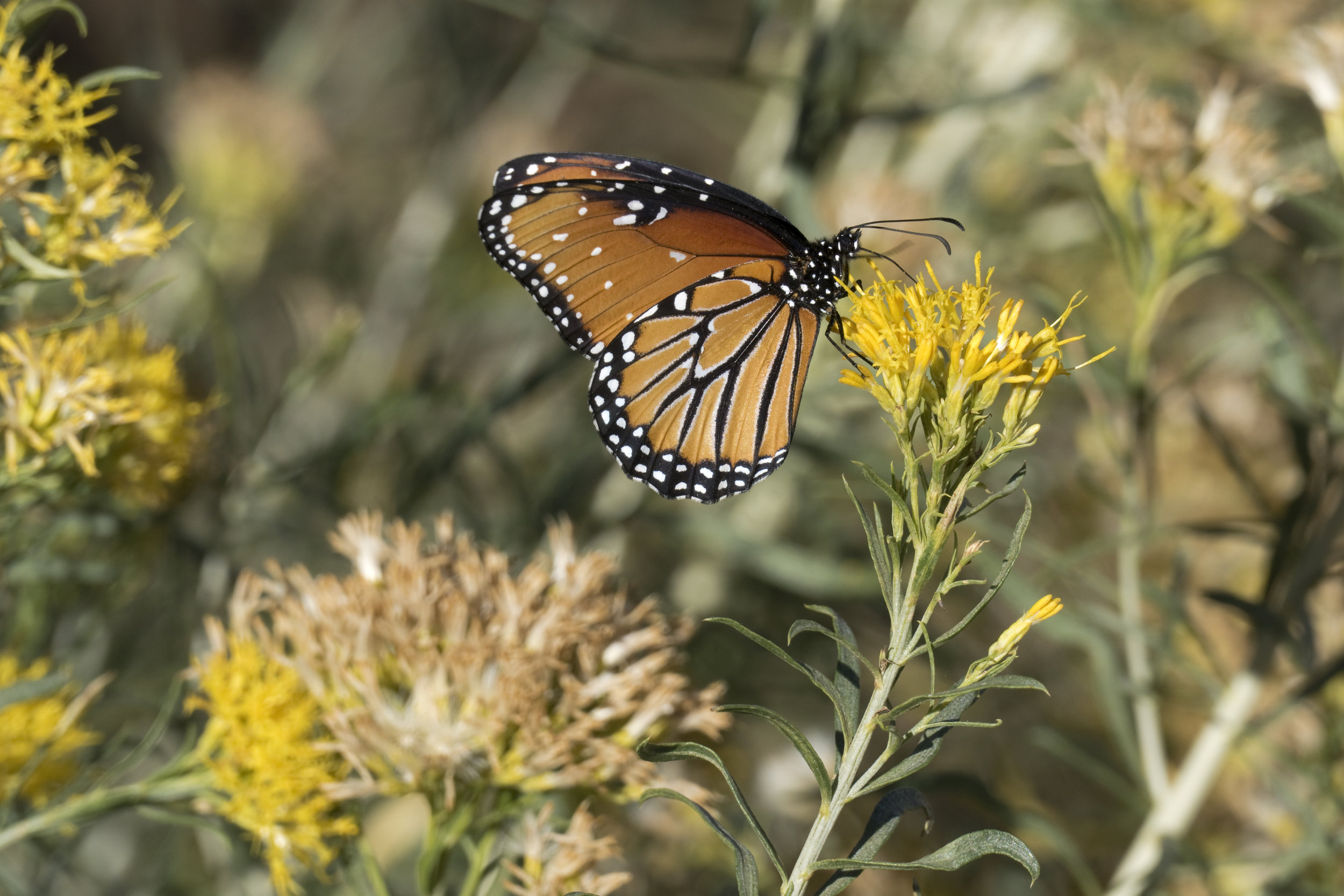Ericameria nauseosa (Rubber rabbitbrush)
Formerly Chrysothamnus nauseosus. Bushy deciduous shrub up to 8 ft. tall with yellow compact flower clusters, blooming May to November. Adapted to various soils from gravel to heavy clays on slightly acidic to strongly basic or saline sites. Found in dry, open plains, valley bottoms, drainages, foothills and mountains; up to 10,000 ft. elevation. Common component of numerous habitats including, ponderosa pine, sagebrush, desert and mountain shrub, pinyon-juniper, mountain plains and desert grasslands. Establishes easily and aggressively after disturbance, becoming a minor community component over time. Sprouts vigorously after wildfire. Important winter browse for deer, antelope and elk on poor or depleted rangelands. Provides cover for small mammals and birds including sage-grouse. Attracts numerous native insect pollinators. Flowers are foraged by yellow faced bees, which are thought to be endemic to Craters of the Moon National Monument & Preserve, ID. Caterpillar host for the moth Pelochrista crambitana.
DISTRIBUTION / ADAPTATION
INFORMATION & ATTRIBUTES
Family: Asteracea
Duration: Perennial
Growth Habit: Shrub/subshrub
Native Status: Native
Growth Form: Multi stem
Mature Height: 1-8 ft.
Bloom Color: Yellow
Fruit/Seed Color:
Bloom Period: July-October
Annual Precipitation: 6 in.
Drought Tolerance: High
Shade Tolerance: Intolerant
Elevation: 2,000-9,000 ft.
Fire Resistance:
Fire Tolerance:
Nitrogen fixation: None
SOIL ADAPTATION
Coarse Texture: Yes
Medium Texture: Yes
Fine Texture: Yes
Salinity Tolerance: Low
CaCO3 Tolerance: Low
pH Range: 5.4-8.2
SEEDING NOTES
Seeds per Pound: 400,00
Seeding Rate: .025 PLS lbs/acre (in mix)
Season: Fall
Days to Germination:
VARIETIES & LOCAL ACCESSIONS
None



